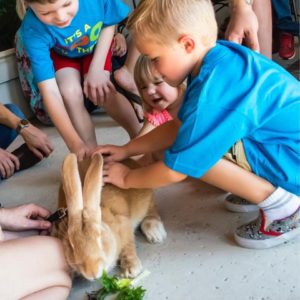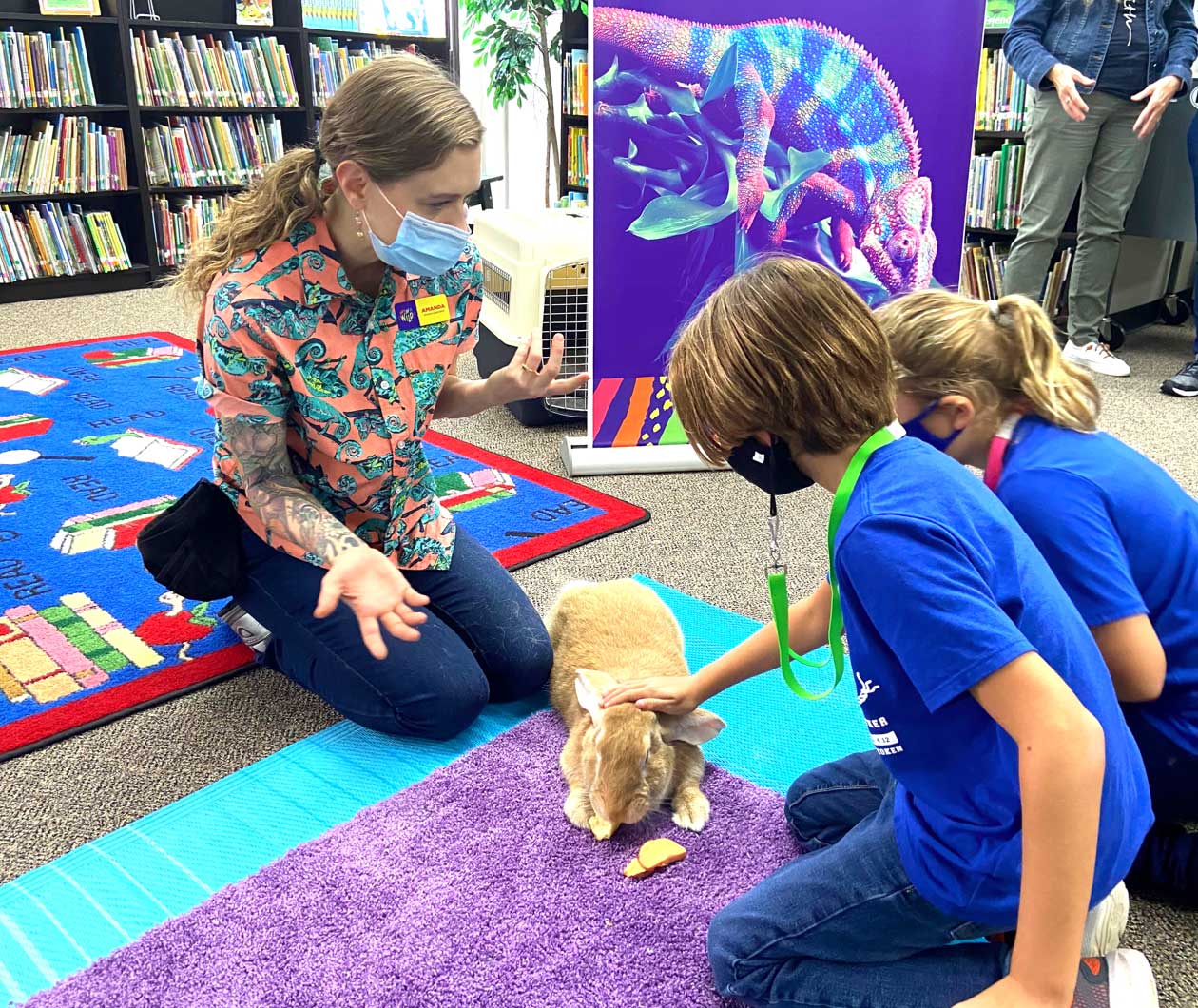When a child visits a zoo and sees a mammal, bird, reptile, or insect for the first time, it is as if they have stepped into a special world. Likewise, an animal classroom program, complete with new sights, sounds, smells, and information creates a mysterious (yet exciting) place for children to have the opportunity to connect with nature and enhance their education.
Children are naturally drawn to animals. While adults view animals (such as pets) for what they can give us (e.g. companionship), children tend to recognize animals first as living creatures. This is why you’ll often see a child bend down to stroke the neighborhood cat, fill a container with soil and bugs from the backyard, or become upset when a fly is swatted during the summer.
A Stimulating Environment to Learn.
 Our animal classroom programs help to create an interactive experience. The phonetics we use to describe what the child is seeing (a chameleon, rabbit, or scorpion for example) can help develop their vocabulary and comprehension skills. The words we often use, and the names of our animals, often bring forth a giggle or two as well!
Our animal classroom programs help to create an interactive experience. The phonetics we use to describe what the child is seeing (a chameleon, rabbit, or scorpion for example) can help develop their vocabulary and comprehension skills. The words we often use, and the names of our animals, often bring forth a giggle or two as well!
The best way to learn is by doing and feeling, so we often invite children to come up close, and sometimes even allow them to have a hands-on experience with some of our species. We explain each animal’s natural habitat, their quirky characteristics, and–most importantly, what food they like to eat. And this stimulates a child’s imagination beyond our comprehension.
Empathy and Compassion
There is a growing consensus that children who are encouraged to care for animals, and the wider environment they live in, become more compassionate and caring towards other people too. An animal classroom program can create a special bond between a child and an animal. Stroking their fur, touching their scales, watching their movements, and observing their natural habits work to create an emotional bond.
This impact can also be seen in classroom behavior. The more time children spend with animals, the higher their empathy levels rise. They begin to understand that the common needs for both animals (and humans) to survive include food, shelter, and water. Additionally, the calming effect that animals can have on children often leads to positive relationships within the class. All these developments can greatly enhance a child’s overall education.
Learning Styles to Suit Every Child
Each and every child learns in a different way from their classmates. An animal education program, with its multi-sensory approach, provides each child with a stimulating environment to learn. We know some children just love to quietly listen. Our Zoologist, Amanda, can talk about the animals we look after from dawn until dusk! And we just know some children would be happy to sit with her all day if they could, soaking up every last word.
However, we know there are also children who might become bored–very quickly. We know a few adults who may be like that too! But animal classroom programs give those children who thrive more on stimuli like visuals, touching and feeling (and even opportunities to be outdoors) which can easily give them a chance to soak up the knowledge that’s all around them!
A zoo animal classroom program delivers an incredible learning experience for children, and can greatly enhance their education. We cater for all ages and curriculums, so please get in touch with us to discuss your educational preferences or requirements.








